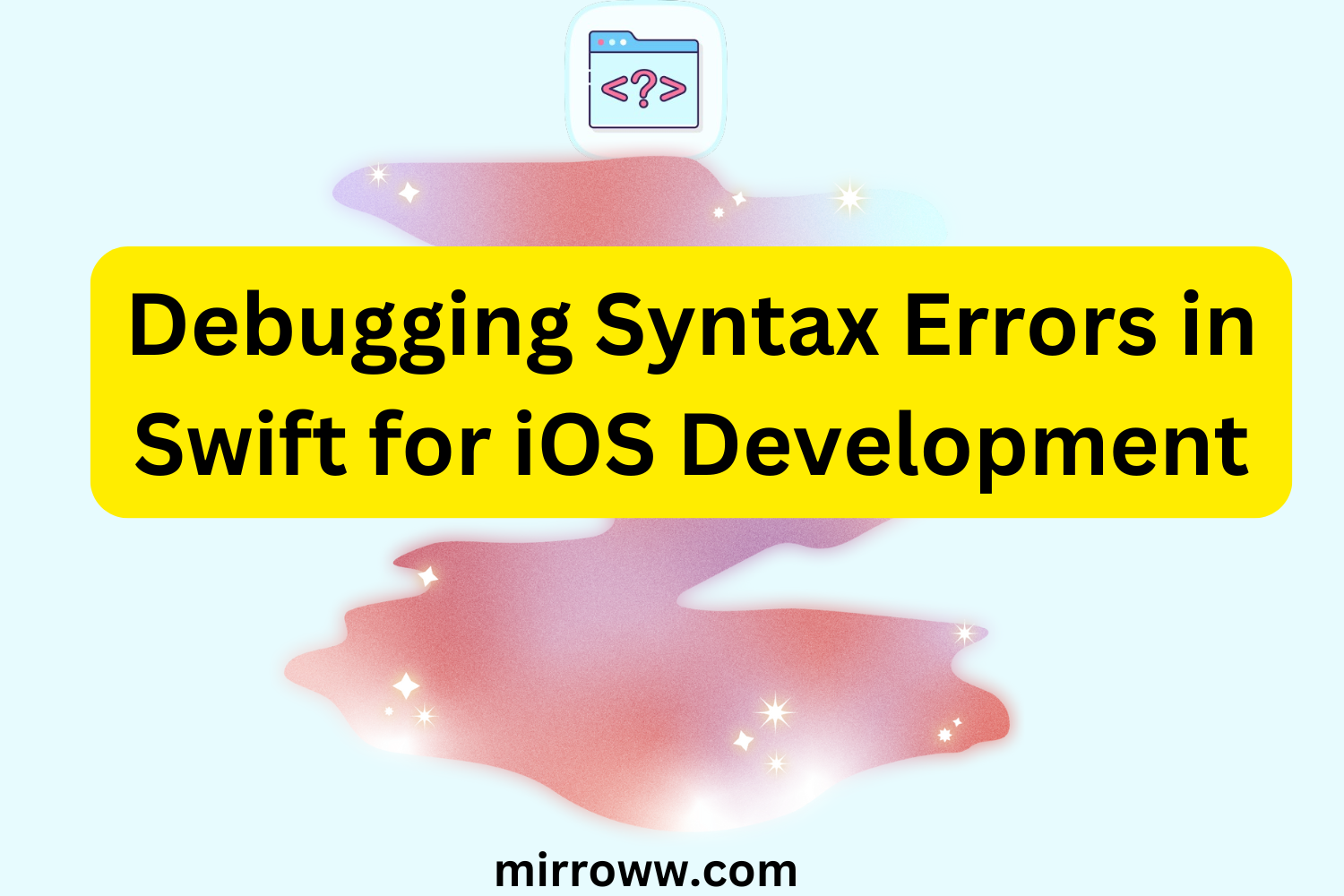
Debugging Syntax Errors in Swift for iOS Development
As an iOS developer, encountering syntax errors in Swift is like finding unexpected roadblocks on what should have been a smooth highway. They’re frustrating, often cryptic, and sometimes downright confusing. But fear not! Debugging syntax errors isn’t just about fixing issues—it’s about understanding the language and sharpening your skills. Let’s dive into how you can tackle these errors efficiently and with confidence.
Why Syntax Errors Happen
Syntax errors occur when your code violates Swift’s grammatical rules. Swift, being a statically-typed language with a clean and strict syntax, demands precision. Here are some common causes:
- Missing or mismatched braces: Forgetting a closing bracket or parenthesis can wreak havoc.
- Incorrect use of semicolons: Unlike some other languages, Swift doesn’t require semicolons unless multiple statements are on one line.
- Typographical errors: Misnaming a variable or misspelling a keyword.
- Misplaced commas or colons: Swift is particular about punctuation in dictionaries, tuples, and array declarations.
- Invalid type casting: Using the wrong type casting operator (e.g.,
asvs.as?).
Knowing why errors occur is half the battle. Now, let’s look at how to identify and resolve them.
How to Spot Syntax Errors
1. Xcode’s Built-In Compiler
Xcode doesn’t let syntax errors slide. The red squiggly lines and error messages are your first line of defense. Pay attention to:
- Error descriptions: Hover over the red marks to read what went wrong.
- Line numbers: The compiler points out the line where the error was detected, but remember, the real problem might be a line or two before.
2. Console Output
When you try to run your app with syntax errors, the console provides detailed messages. While the text can be overwhelming, focus on keywords like “Unexpected” or “Expected” to understand what Swift anticipated but didn’t find.
3. Static Code Analysis
Tools like SwiftLint help enforce style and catch potential errors before they become full-blown bugs. Integrating such tools into your workflow can save hours of frustration.
Common Syntax Errors and Fixes
1. Missing Braces or Parentheses
Error Example:
if condition {
print("Hello, World!"
}
Fix:
if condition {
print("Hello, World!")
}
Ensure every opening brace, parenthesis, or bracket has a matching closing counterpart.
2. Incorrect Use of Optional Types
Error Example:
let name: String = nil
Fix:
let name: String? = nil
Swift’s type system requires you to explicitly declare optional types when a variable might be nil.
3. Invalid Use of Keywords
Error Example:
let class = "Physics"
Fix:
let subject = "Physics"
Avoid using reserved keywords like class, struct, or enum as variable names.
4. Type Mismatch
Error Example:
let age: Int = "Twenty"
Fix:
let age: Int = 20
Ensure variables are assigned values that match their declared types.
5. Unwrapping Optionals Incorrectly
Error Example:
let name: String? = nil
print(name!)
Fix:
if let unwrappedName = name {
print(unwrappedName)
} else {
print("Name is nil")
}
Avoid force unwrapping unless you’re absolutely certain the value isn’t nil.
Tips for Efficient Debugging
1. Read the Error Messages Carefully
Xcode’s error descriptions can seem cryptic at first, but they’re often quite literal. If it says “Expected ‘,’ separator”, check for missing commas.
2. Use Code Formatting
A well-indented codebase is easier to read and debug. Use Xcode’s “Editor > Structure > Re-Indent” feature to clean up your code.
3. Break Down Complex Expressions
If a line of code throws an error, break it into smaller chunks to isolate the problem. For instance:
let result = array.filter { $0 > 5 }.map { $0 * 2 }.reduce(0, +)
can be rewritten as:
let filtered = array.filter { $0 > 5 }
let mapped = filtered.map { $0 * 2 }
let result = mapped.reduce(0, +)
4. Leverage Playgrounds
Swift Playgrounds are a sandbox for testing snippets of code. Use them to experiment with syntax and isolate problematic code segments.
5. Consult Documentation
Swift’s official documentation and forums like Stack Overflow are goldmines for troubleshooting.
Turning Syntax Errors into Learning Opportunities
Every syntax error is an opportunity to deepen your understanding of Swift. Instead of dreading them, approach errors with curiosity:
- Analyze Patterns: Are you frequently making the same mistake? It might be time to revisit Swift basics.
- Explore Alternatives: When fixing an error, ask if there’s a cleaner or more efficient way to write the code.
- Document Your Learnings: Keep a journal of common errors and their solutions. Future-you will thank you.
When to Ask for Help
Sometimes, even seasoned developers hit a wall. Don’t hesitate to seek assistance if:
- You’ve been stuck for hours with no progress.
- The error message makes no sense, even after Googling.
- You suspect a deeper issue, like a bug in Xcode or Swift itself.
Communities like the Swift Forums, Reddit’s iOSProgramming subreddit, and local meetups can provide invaluable support.
Final Thoughts
Syntax errors are inevitable, but they’re not insurmountable. Armed with the strategies outlined here, you can debug faster, write cleaner code, and maybe even learn to enjoy the process (or at least tolerate it with less caffeine). Remember, every error you fix brings you one step closer to mastering Swift.
Now, fire up Xcode, tackle those red squiggles, and build something amazing. And if you’re feeling stuck, remember: even the best developers started where you are. Keep going—you’ve got this!